The History of the Shift Dress: From Coco Chanel to Jackie Kennedy
- Oops!Something went wrong.Please try again later.
- Oops!Something went wrong.Please try again later.
- Oops!Something went wrong.Please try again later.
The little dress that will never go out of style.
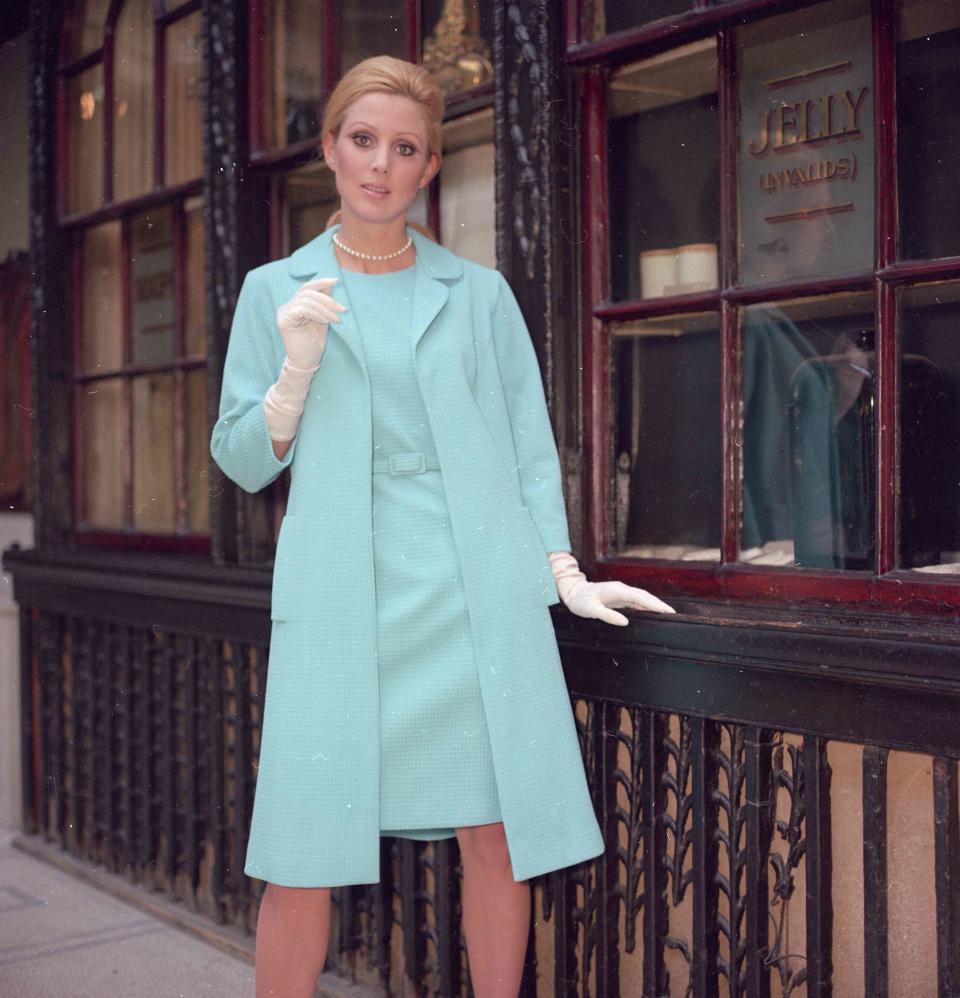
Chaloner Woods/Getty Images
If you have a shift dress hanging in your closet, we wouldn't be all that surprised. This loose-fitting style is extremely versatile and flattering for all body types, and has been considered a classic for decades.
While the shift dress is considered a wardrobe staple today, it was actually quite a radical innovation in the 1920s. At the height of corseted dresses, iconic fashion designer Gabrielle “Coco” Chanel popularized the shift dress in 1926 when her little black dress was featured in Vogue. Her decision to ditch restricting silhouettes was driven by a need for comfortable clothing, and also represented the feminist movement of the time. After regaining popularity in the 1960s, the shift dress has evolved over the years with each era.
Tips
A shift dress has a loose-fitting silhouette that hangs straight down from the shoulders. Typically, a shift dress is sleeveless with a boat neckline and little to no embellishments, but that can vary depending by the designer. Shift dresses can also have short or three-quarter-length sleeves, and have patterns such as stripes or colorblocking.
So, if you’re curious about where the shift dress comes from, let’s rewind all the way back to the 1920s to uncover the history of the garment.
The Shift Dress in the 1920s
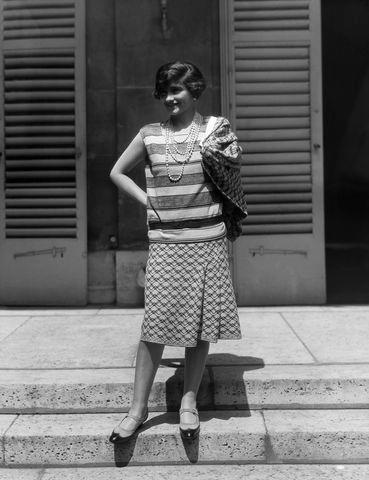
Hulton-Deutsch Collection/CORBIS/Corbis via Getty Images
The Victorian and Edwardian eras that preceded the ‘20s were all about dresses with corsets and long skirts, which helped create the appearance of an hourglass figure. In 1926, Coco Chanel revolutionized fashion when she used her designs to put an emphasis on function and comfort.
"The notion of comfort and ease and liberty of movement was unheard of in fashion until then, and especially in a world of haute couture which she inscribed herself in," Miren Alluraz, museum director and co-curator of "Gabrielle Chanel: Fashion Manifesto," told the BBC in 2021.
Her little black dress with a boxy waist, boat neckline, and knee-length hemline was featured in the October 1926 issue of Vogue. The magazine reportedly referred to it as “The Ford,” in reference to the popular Model T, according to Smithsonian Magazine. The design caused an uproar because of its simplicity and dark hue. The silhouette was the foundation of the “flapper” style, and also became popular amongst other designers like Elsa Schiaparelli and Jean Patou.
The Shift Dress in the 1960s
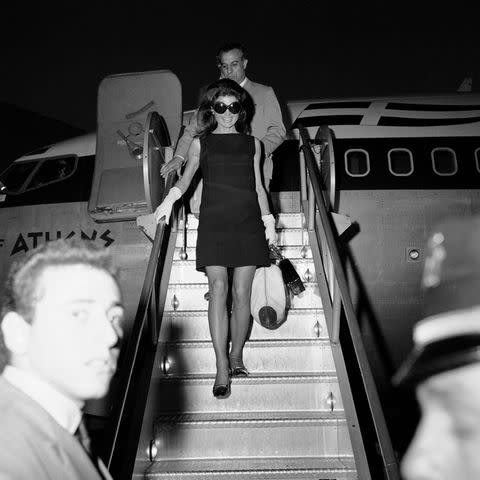
Harry Morrison/WWD/Penske Media via Getty Images
Jackie Kennedy Onassis in a black shift dressWhile Dior established the “new look” in the ‘40s and ‘50s, which was characterized by cinched waistlines and calf-length skirts, shift dresses made a strong comeback in the ‘60s. The shifts of this era embodied the mod aesthetics of the time and featured various bold colors, short hemlines, and button closures.
Designer Mary Quant, who popularized the miniskirt in England, was a pioneer of the modern shift dress in the ‘60s. She created stylish and affordable dresses for young women, and her colorful designs were often seen on British model Twiggy. In 1966, Twiggy posed in a bright pink shift dress by the designer with disco ball earrings and white tights, and the look became one of the most recognizable in her career.
“By the time that I was discovered in 1966, Mary Quant had already left her mark on the fashion world. Before her designs, there were no real clothes for teenagers,” Twiggy told British Vogue in 2019. “If you look at girls in the ’50s, most of them are dressed like their mothers. She changed all of that — and paved the way for Biba, which was really my greatest fashion inspiration.”
Jackie Kennedy and Audrey Hepburn also had a hand in popularizing the shift dress in the ‘60s. But they took a more classic approach to the look, with Kennedy often sporting white gloves and kitten heels with her various shift dresses. Though the former First Lady gave the shift dress widespread appeal, Hepburn had a significant cultural moment with the black Givenchy dress she wore in the opening scene of Breakfast at Tiffany’s. The shift garment was inspired by Chanel’s little black dress from the ‘20s and became one of the most recognizable fashion moments of that decade and beyond.
Lilly Pulitzer and the Shift Dress
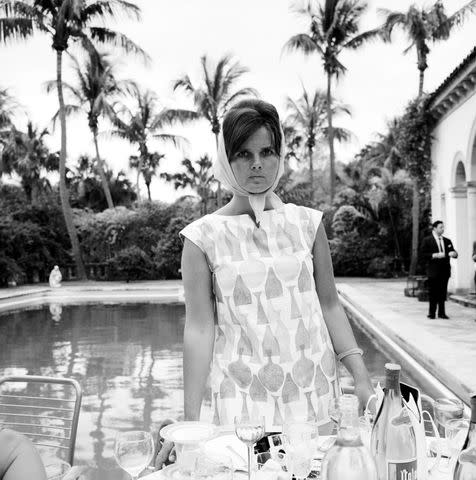
Slim Aarons/Getty Images
Lilly Pulitzer in a shift dressWe can’t talk about shift dresses without mentioning Lilly Pulitzer, known for her bold graphic prints. In the early 1960s, she was working at her husband’s juice stand in Palm Beach, Florida when she hired a seamstress to create a shift dress that would hide juice stains and be comfortable to wear in the heat, according to Vanity Fair. The result became known as “the Lilly” and was priced at only $22 when she and her business partner Laura Clark (a former Harper’s Bazaar editor) began selling the garments.
"The line wasn’t very extensive," Pulitzer told Vanity Fair in 2011. "Two bodies, one was sleeveless and one had a sleeve. I mean everybody, they had to have them. Whether they fit or not, who cared? Just get one, I want it, I have to wear it to dinner."
Yet again, Jackie O. had a hand in popularizing the trend. Though the statement shift dresses were popular amongst Florida residents, they were desired globally after she was photographed wearing a polka-dot Lilly Pulitzer dress on vacation in Capri, Italy. Pulitzer told Elle in 2009 that her business "took off like zingo" after that.
The YSL Mondrian Dress
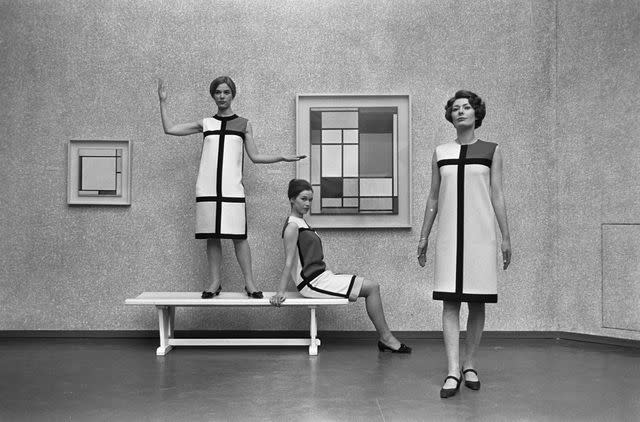
Sepia Times/ Universal Images Group via Getty Images
Models in YSL Mondrian dressesYves Saint Laurent’s Mondrian dress debuted in 1965 as part of the Fall/Winter collection and was designed as a tribute to painter Piet Mondrian, according to the Yves Saint Laurent Paris Museum. Specifically, the colorblocked design was inspired by Mondrian’s 1920 painting, Composition with Yellow, Red, Black, Blue, and Gray.
The majority of YSL’s 1965 collection was simple evening silhouettes in muted colors, but the Mondrian dress was an outlier. It came in three different designs and seamlessly merged fashion with art. Laurent’s use of bright colors and black geometric lines gave the shift dress a modern feel, and the design is now revered as iconic.
“Not only does fashion accurately reflect an era, it is also one of the more direct forms of visual expression in human culture,” Mondrian reportedly said, according to the Yves Saint Laurent Paris Museum.
The Mondrian dress fully embodied the ‘60s mod style and influenced other designers to use the colorful geometric print in their collections. Saint Laurent also reimagined his Mondrian dress for YSL’s Spring/Summer 1997 collection.
The Shift Dress Today
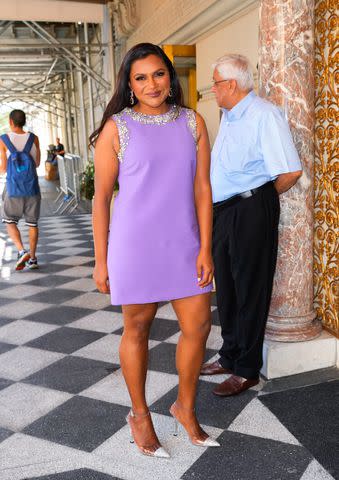
Gotham/ GC Images
Mindy Kaling in an Oscar de la Renta shift dressThe shift dress remains a staple in women’s wardrobes today — but with a contemporary twist. Although the classic styles of the ‘60s are still popular amongst celebs like Amal Clooney, Zoë Kravitz, and Kate Middleton, shift dress designs have evolved over the years. We’ve seen more asymmetrical hemlines, off-the-shoulder necklines, and crystal embellishments pop up in shift dresses from designers like Oscar de la Renta, Chanel, and Carolina Herrera for timeless yet bold looks.
For more InStyle news, make sure to sign up for our newsletter!
Read the original article on InStyle.

